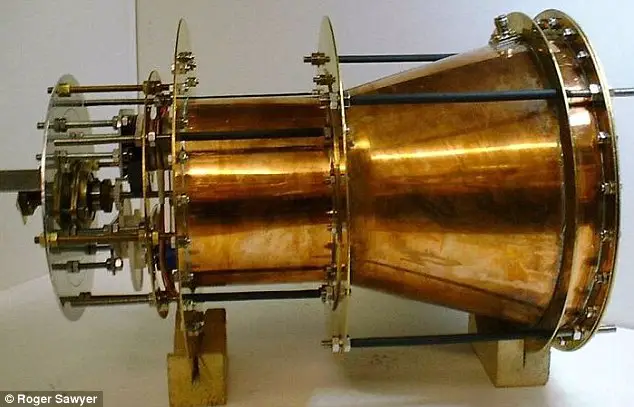The controversial, radical, revolutionary and extraordinary fuel-free EmDrive has created a buzz in the scientific community recently after a paper published by scientists at NASA showed that the technology works successfully.
The physics-defying engine is said to be able to help bring mankind to Mars in just 10 weeks and beyond While experts in the US and Europe debate whether or not the engine works, whether or not it is viable for space, scientists with the Chinese Academy of Space Technology claim NASA’s results have ‘re-confirmed’ what they’d already achieved. Furthermore, the Chinese space agency plans to implement the engine in the satellites as soon as possible.
The physics-defying engine is said to be able to help bring mankind to Mars in just 10 weeks and beyond While experts in the US and Europe debate whether or not the engine works, whether or not it is viable for space, scientists with the Chinese Academy of Space Technology claim NASA’s results have ‘re-confirmed’ what they’d already achieved. Furthermore, the Chinese space agency plans to implement the engine in the satellites as soon as possible.

Scientists have been left surprised after tests have shown that the EmDrive –which has no fuel to ehavet— completely shatters Newton’s third law which states that every action has an equal and opposite reaction.
IBTimes Uk reports that researchers with Cast –a subsidiary of the Chinese Aerospace Science and Technology Corporation—confirmed at a press conference in Beijing that the Chinese government has been funding research into the ‘EmDrive technology’ since 2010, and that they have already created a device that is currently being tested in space.
“National research institutions in recent years have carried out a series of long-term, repeated tests on the EmDrive. NASA’s published test results can be said to re-confirm the technology. We have successfully developed several specifications of multiple prototype principles. The establishment of an experimental verification platform to complete the milli-level micro thrust measurement test, as well as several years of repeated experiments and investigations into corresponding interference factors, confirm that in this type of thruster, thrust exists.” Dr Chen Yue, head of the communication satellite division at Cast said at the press conference, IBTimes UK reports.

Li Feng, the Chief designer of Cast’s communication satellite division claims that the team has successfully designed a prototype that generates a few millinewtons of thrust, IBTimes UK reports. However, for the engine to work on satellites, the team will need to ramp up the levels to something around 1 Newton’s.
This means that they will have to work on the cavity design in order to reduce electrical losses, developing a solution for the placement of the microwave thruster on the satellite itself.
“This technology is currently in the latter stages of the proof-of-principle phase, with the goal of making the technology available in satellite engineering as quickly as possible. Although it is difficult to do this, we have the confidence that we will succeed.” Li Feng said at the conference, IBTimes reports.
